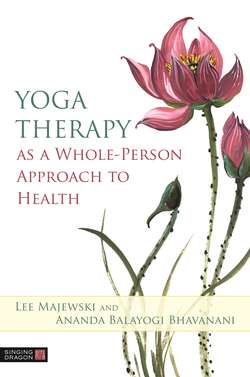Читать книгу Yoga Therapy as a Whole-Person Approach to Health - Lee Majewski - Страница 13
На сайте Литреса книга снята с продажи.
Krishnamacharya-Desikachar model
ОглавлениеThe Krishnamacharya-Desikachar model is based on Patanjali’s Yoga Sutras. There is an understanding of the different stages of life and the different processes involved in each. By distinguishing needs and goals with reference to the individual, this tradition emphasizes the individualization of the approach to yoga and yoga therapy as a practice. The application is based on a broad segregation as follows: the growth process in children (srsti karma), the maturation process in older teenagers and young adults (siksana karma), a maintenance process preventing future complications (raksana karma), a spiritual process, especially in older people (adhyatmika karma), and as a healing modality and process in individuals with health issues (cikitsa karma).
In this classical tradition, yoga therapy is elevated to a highly sophisticated healthcare discipline. It is practiced as a client-empowering process, where the client is responsible for their healing process. It is done in an individualized, one-to-one setting with a multidimensional approach, often utilizing many tools of yoga. The client-centric process is context-sensitive and respects the age, occupation, ability, and other parameters of the individual. It is considered an evolving process, and is not used as merely a quick-fix solution. It is adopted as a personal and spiritual development path, as a process to develop one’s own unique strengths, and hence it fits in ideally as a collaborative and complementary system of self-healthcare.
The four-pronged systematic arrangement (vyuha) model of yoga therapy is foundational to this tradition and is based on Maharishi Patanjali’s Yoga Sutras. The steps involved in the process are: a complete and comprehensive understanding of the problem and the individual having the problem (heyam); establishment of the cause of the problem (hetu); the therapeutic goal of healing (hanam); and the selection and utilization of tools to bring about the desired goal (upayam). These are established through four ways of evaluation (pariksha) that involve: observational analysis of the client (darsanam); palpation and touch-based analysis (sparsanam); a detailed interview with the client (prasnam); and pulse examination (nadi pariksa).
